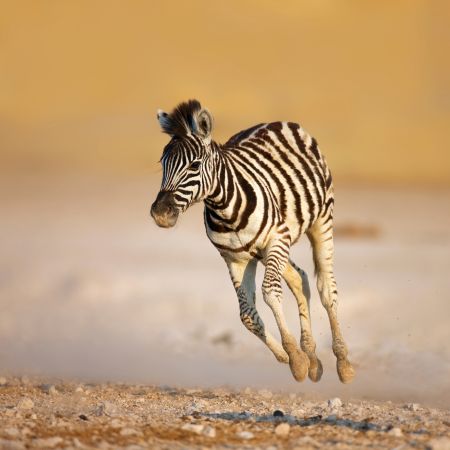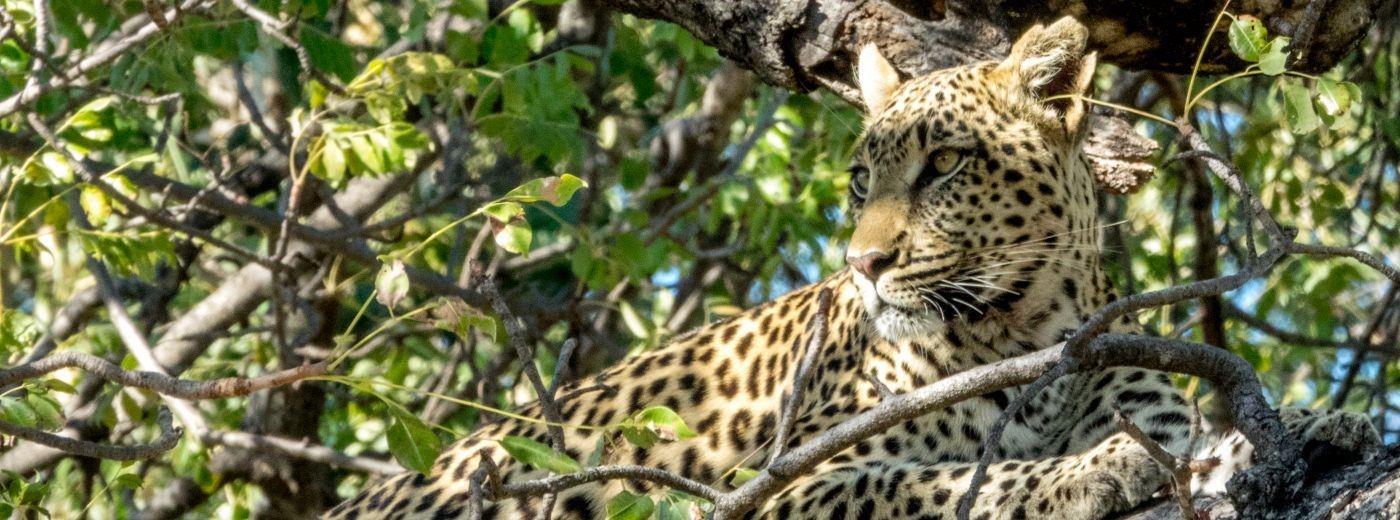What To Expect and What To Take
Going on a self-drive safari in Etosha will be an exhilarating experience and will undoubtedly be one of the main highlights of your trip to Namibia. Etosha offers some of the finest wildlife viewing in Africa so be prepared to be wowed!
Exploring Etosha
There are 4 main gates that lead into the Park - the Andersson Gate to the south, the Von Lindequist Gate to the east, the Galton Gate to the south-west, and the King Nehale Lya Mpingana Gate in the north. These gates are open from sunrise to sunset and upon arrival every visitor pays an entrance fee which contributes to the upkeep and the conservation efforts of Etosha. The current entrance fee (subject to change) is Namibian Dollars 80 per adult per day (children under 16 years of age are free of charge) plus there is a Namibian Dollars 10 per vehicle fee per day too. Every visitor also has to show some form of identification - be it a passport, driving licence or ID - so do have these easily to hand to save time.
 Once you are inside the Park, you have to stay on the road network at all times. The main roads leading from the main gates are tarred, but after that the majority of the roads will be gravel. The condition of the gravel roads ranges from surprisingly smooth to very pot-holed so do be careful at all times, especially if you are not used to driving on gravel as well. Only the southern rim of the Etosha Pan is open to visitors and there are no roads traversing the Pan itself.
Once you are inside the Park, you have to stay on the road network at all times. The main roads leading from the main gates are tarred, but after that the majority of the roads will be gravel. The condition of the gravel roads ranges from surprisingly smooth to very pot-holed so do be careful at all times, especially if you are not used to driving on gravel as well. Only the southern rim of the Etosha Pan is open to visitors and there are no roads traversing the Pan itself.
The speed limit through the Park is 60 km and it is really important to observe this at all times. As a general guide, don't expect to travel more than 25 km in an hour, which allows you to stop and enjoy the wildlife on the way. Always make sure you have plenty of water and refreshments in the car.
The 3 main camps in the Park are Okaukuejo, Namutoni and Halali. These all have restaurant/shop facilities as well as petrol stations. Make sure that you check your petrol/fuel levels and we would advise filling up whenever possible. There are fenced off picnic sites dotted throughout the Park too which are ideal for getting out and stretching your legs for a bit.
All self-drive visitors must be out of the Park before the gates close - check when you enter what these times are as they change weekly depending on sunrise/sunset. You do need to plan your drives carefully - you don't want to find yourself stuck in the middle of nowhere with only half an hour to get to the gate before it closes! Fines are imposed for people who do not adher to the times.
The game is most active in the early mornings and late afternoons, so plan your game drives accordingly. During the heat of the day, many animals rest in the shade under trees and bushes, making it harder to spot them. If you see any wildlife close to the road, you are advised to slow dow and maintain a good distance so as not to scare them. Do not drive off-road in any circumstances, nor get out of your vehicle.
If you are unlucky enough to break down or puncture a tyre, stay inside your car until help arrives. Do not get out of the vehicle at all. This kind of incident is highly unlikely, but make sure you have a mobile phone handy - just in case!
Depending on where you are staying in/around Etosha, your accommodation may also offer guided game drives into the Park if you decide you don't want to drive yourself every day. This will be an additional cost, of course, and will normally be with their own ranger and safari vehicle, so you will share the experience with other guests (unless you pay for a private vehicle - which is an option but will need to be prebooked so please contact your Travel Butlers consultant if you think you may want this). Game drives can normally be booked directly with the accommodation when you are there, but we would recommend giving them as much notice as possible to ensure that they allocate a space on the safari vehicle for you.
Safari Clothing
What to pack for a safari is a question that we get asked again and again. Whilst this is not the definitive list, it should give you a bit of a guideline. There are a couple of ‘general rules’ to remember as a starting point.
- You do not need to invest in a special safari outfit, however you should try to take neutral coloured clothes – so greens, beiges, etc – and avoid taking anything too brightly coloured. Camouflage printed clothing is not necessary but if you do take anything in this style, please note it is not advisable to wear this in towns, at airports or when crossing borders.
- Take comfortable clothes – remember that you may be out for the entire day so you don’t want to feel uncomfortable 10 minutes into a drive and have to return to your accommodation to get changed!
- Try to avoid taking anything white – firstly the dust will soon turn your pristine white t-shirt into a not-so-attractive dirty colour, and secondly white does attract bugs, especially at night.
- The dress code on safari is very relaxed, so there is no need to worry about packing formal shirts, ties, jackets or cocktail dresses for the evenings!
Clothing items to take include:
- Shorts/t-shirts - ideal for the warm midday periods.
- Long trousers and long sleeved shirts – for the evenings to protect yourself from mosquito bites.
- A warm sweater/fleece.
- A waterproof jacket – especially if you are going on safari during a known rainy season.
- Swimwear - just in case you fancy a cooling dip inbetween game drives if your accommodation has a pool.
- Ladies may want to consider packing a good support bra, as the gravel roads can be bumpy.
- Comfortable walking shoes, trainers or hiking boots.
- Sandals - ideal to wear at meal times and around the main accommodation area.
- A sun hat or baseball cap - to help to shade your eyes from the sun when looking for the wildlife.
Other Items To Take On Safari
A quick check list of other useful items to take with you:
- A small day pack to take out on safari drives with you.
- A water bottle – your accommodation will fill this up with water if you ask – great to stop you getting dehydrated while out in the Park.
- A good pair of sunglasses.
- Sun block with a high SPF factor (between 30 and 50) and lip balm.
- Strong insect repellent - even in malaria-free areas, there are still bugs about that can give you a nasty bite. Some properties will supply this in the rooms, but better to be safe than sorry and pack your own just in case.
- First aid kit (plasters, antiseptic cream/wipes, antihistamine tablets/cream or other medication to relieve reactions to insect bites or stings, painkillers, etc).
- If you wear daily disposable contact lenses it is advisable to bring more than you think you will need, as you may want to take the lenses out if you get too much dust in your eyes.
- Malaria tablets and other personal medication.
- Camera (and if you are into photography in a big way, consider different size lenses and a bean bag to rest the lens on so that you avoid camera shake).
- One top tip for camera equipment is to take a pillowcase or other cloth bag to keep everything in when out on a safari drive in the Park – some camera bags are big and unweldy so take up valuable seat space, plus you end up having to unzip compartments and while the bag is open dust gets in everywhere – instead consider having everything in a pillowcase that you can keep relatively ‘closed’ and just reach in to retrieve the necessary camera body/lens as required.
- Spare camera batteries, memory cards and battery charger - there is nothing worse than seeing the perfect shot, only for your camera to die a death or the memory card to be full (bear in mind too that the opportunity to download photos may be limited).
- Binoculars.
- A small flashlight may be useful.
- Books/novels for siesta hours.
- Wildlife and bird reference books – enabling you to identify the wildlife/birdlife when out on a drive.
Just a Few More Things to Remember!
If you have any specific dietary requirements, please let your Travel Butlers consultant know in advance, so that we can pass this information onto your accommodation.
Although it is of course very tempting to spend the entire time behind the lens of your camera, so that you capture every potential second of the lion walking past, do remember to try to emerge sometimes and just enjoy the experience first hand.
The wildlife is just that... wild. There is no guarantee that you will see every living species of the African bush, but you don't end up seeing a leopard or witness lions hunting, don't be too upset - just look back at everything else you did see with very fond memories!

